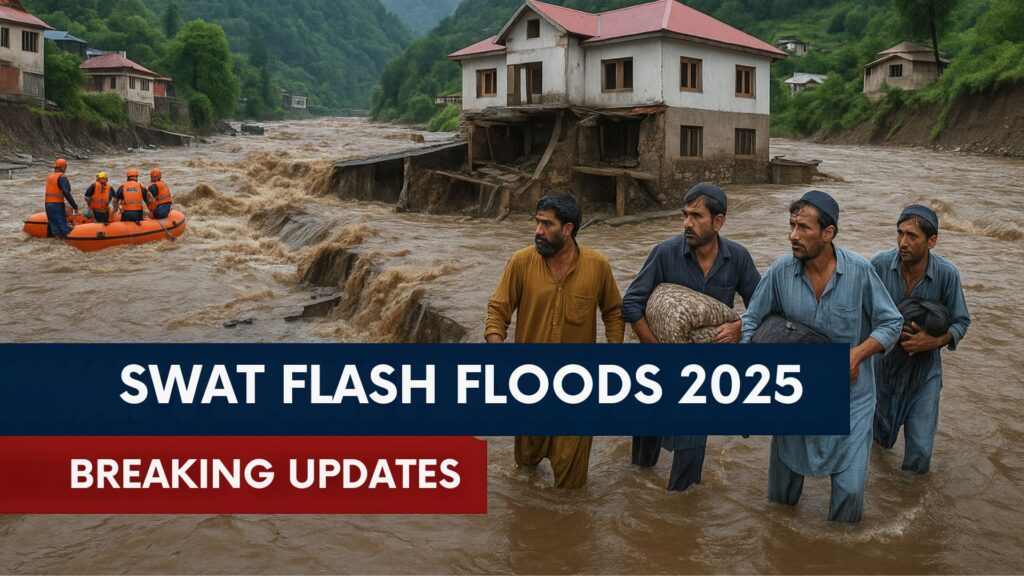Introduction
The stunningly beautiful Swat Valley in Pakistan has recently been struck by yet another swat flood, disrupting lives and livelihoods. Known for its lush hills, rivers, and tourist attractions, this picturesque region has suffered repeatedly from nature’s fury. Flash flooding, in particular, has become an increasingly dangerous phenomenon that demands urgent attention.
What Happened in Swat?
Heavy rainfall over the past few days caused the Swat River to swell dramatically, leading to a powerful swat flood that swept away houses, roads, and even vehicles. Local rescue teams have been working tirelessly to help stranded families and provide emergency aid. Many residents have lost their belongings, and hundreds have been displaced as their homes were inundated.
Reasons Behind the Flooding
Several factors contribute to the rising frequency of flooding in Swat:
- Climate change causing more intense and unpredictable rainfall
- Deforestation reducing the land’s ability to absorb water
- Poor urban planning and weak flood protection structures
These combined challenges mean that every monsoon season, there is a heightened risk of a destructive swat flood.
Government Response and Relief Efforts
Authorities, including the Provincial Disaster Management Authority, have declared an emergency and established relief camps for affected residents. Medical teams and emergency services are on standby to help those who need urgent care. While temporary shelters and food supplies are being arranged, there are calls for a longer-term solution to address repeated flooding in the region.
How Communities Can Prepare
Experts say community-based disaster preparedness can help reduce the damage from such natural disasters. Training local volunteers, setting up early warning systems, and planting more trees could make a significant difference in limiting the future impact of floods.
Looking Forward
While the Swat Valley continues to attract tourists with its natural beauty, the threat of floods cannot be ignored. Stronger infrastructure, riverbank protection, and climate change adaptation will be vital to ensure that the people of Swat can live safely and confidently in the years ahead.
FAQs
Q1: What caused the recent Swat flood?
Heavy monsoon rains, deforestation, and poor riverbank infrastructure contributed to the sudden flooding.
Q2: Which areas were most affected by the Swat flood?
Low-lying areas along the Swat River and nearby villages experienced the worst damage.
Q3: How many people were displaced?
Local officials report that hundreds of families have been forced to leave their homes.
Q4: Is it safe to visit Swat right now?
Tourists are advised to check with local authorities before planning travel, as flood damage is still being assessed.
Q5: What is being done to prevent future floods?
Disaster agencies are working on early warning systems and planting trees to slow future water surges.
Q6: Will flood-affected people get compensation?
The provincial government has announced relief funds, though details on distribution are still being finalized.
Q7: How can communities better prepare for floods?
By creating local volunteer networks, raising awareness, and improving drainage and embankments.



